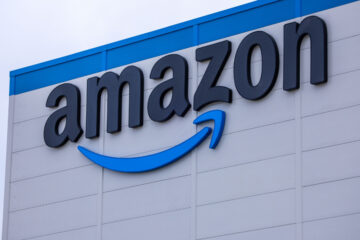LVMH revenue for the period between June and January rose by 27%.
When inflation hits, some switch to generic versions of foods and dial down the thermostat while others stock up on luxury handbags when the dollar is higher than the euro.
For two quarters in a row, the parent company behind brands like Louis Vuitton, Dior and Moët champagne reported bustling sales and strong revenue.
Luxury Handbags Are Driving The Numbers
During the period between January and June 2022, LVMH (LVMH) profit from recurring operations grew by 34% year on year to 10.24 billion euros ($10.38 billion) while a collective polling of FactSet analysts expected only 9.57 billion euros ($9.69 billion) for the Paris-based luxury giant.
Overall revenue, meanwhile, increased by 27%.
The fashion and leather goods section dominated the rest of LVMH by far with 7.51 billion euros ($7.6 billion) in revenue. Brands like Louis Vuitton, Christian Dior, Fendi, Celine, Loro Piana and Loewe gained new market share and were some of the most popular this quarter.
“Driven as always by an exceptional creativity and with a major cultural focus, Louis Vuitton had an excellent first half across all its business activities and maintained its profitability at an exceptional level,” the company said. “[..] Christian Dior continued to enjoy remarkable growth in all its product categories.”
Brands specializing in fragrances and skincare all performed well alongside strong demand for luxury champagnes and cognacs. That said, the handbag segmented is truly where people are buying up the store.
“LVMH has enjoyed an excellent start to the year, to which all of our business groups contributed,” Chief Executive Bernard Arnault said in a statement announcing the results. “[…] We approach the second half of the year with confidence, but given the current geopolitical and health situation, we will remain vigilant and count on the agility and talent of our teams to further strengthen our global leadership position in luxury goods in 2022.”
Net profit, or what the company brings in with all expenses and taxes deducted, 6.53 billion euros ($6.61 billion.)
Why Are So Many Buying Luxury Goods Right Now?
The luxury segment has, even in the toughest of times, followed its own economic trajectory.
At the height of the pandemic, a luxury bag or piece of fine jewelry became, for people of means, a replacement for not being able to travel due to border closures. Now, some are using a strong dollar to buy designer goods in other countries.
At the start of the year, Chanel’s South Korea branch changed its policy so that customers can buy only “one Timeless Classic flap bag and one Coco Handle bag every year” to prevent investors buying them off in droves and hawking them off the market.
Christian Vierig/Getty Images
As with everything else, inflation has also hit the luxury handbag industry. One of Chanel’s most popular models, the Medium Flap Bag, rose in price from $6,800 in 2021 to $7,800 in 2022.
But with prices like that, even significant increases do not have as much of an impact to people who are already set on shelling out several grand on a handbag.
And the sales numbers certainly reflect this fact. A recent report from Transparency Market Research expects the global luxury handbag market to grow at a CAGR of 5.9% from 2021 to 2031 and reach $35.4 billion by 2031.
At the same time, a recent study from Omaha-based insurance company Breeze found that inflation has pushed 73% of U.S. households to cut back on restaurants and takeout while 57% spent less on groceries and 44% made fewer trips to save on gas.


